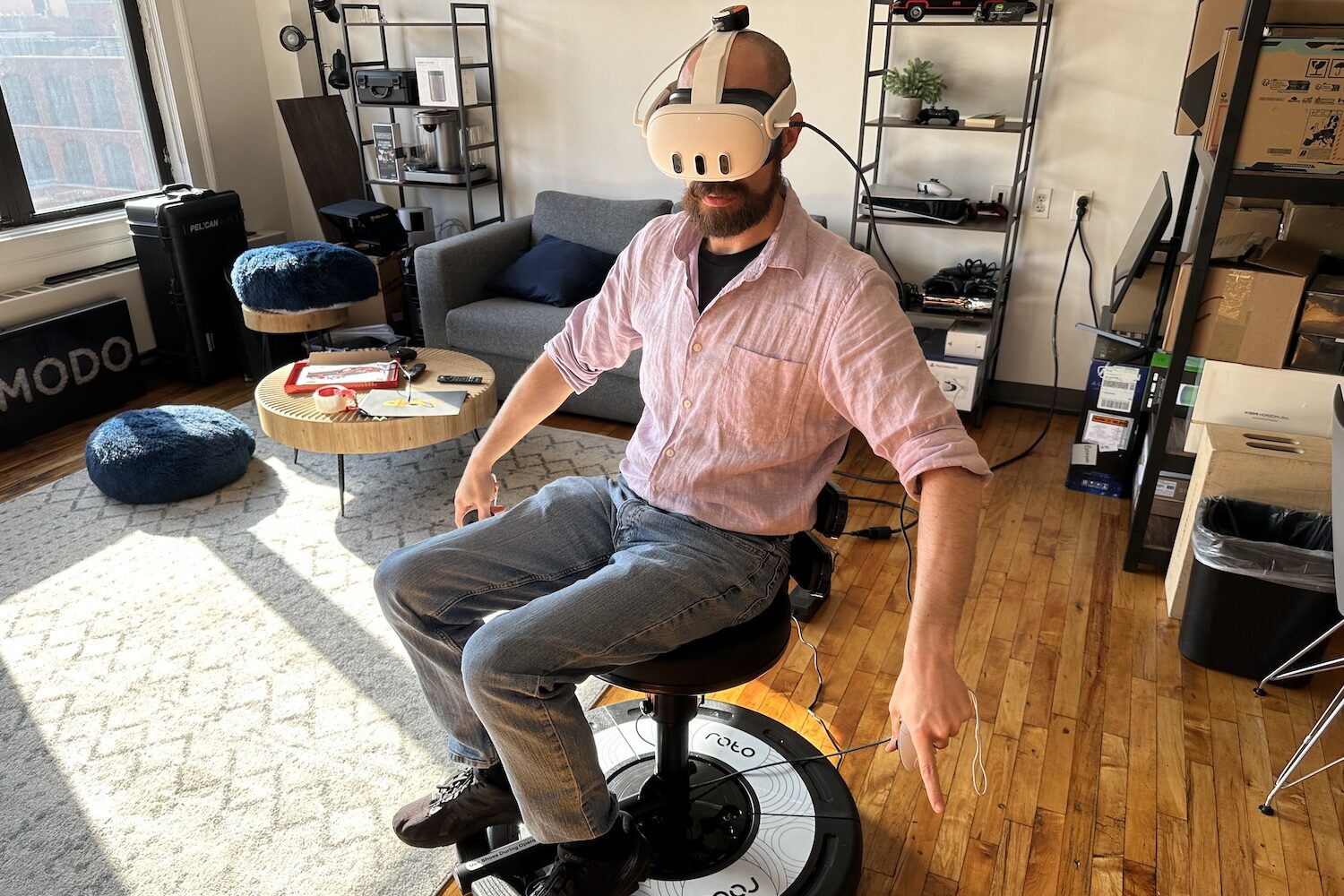Virtual reality gaming has evolved from a simple, sedentary experience to one that offers a more immersive, tactile engagement. The Roto VR Explorer chair aims to bridge the gap between traditional gaming comfort and cutting-edge VR experience. Designed specifically for compatibility with devices like the Meta Quest 3 and the upcoming Quest 3S, the $800 Roto VR Explorer promises a unique blend of innovation and functionality. However, users might find that while the chair provides an enhanced VR experience, it might not be as straightforward to use as one would hope, especially for those susceptible to VR motion sickness.
To understand the challenges associated with the Roto VR Explorer, it’s essential to consider the experiences of users with motion sickness. For instance, the reviewer has experienced significant discomfort during rollercoasters and simple car rides, making VR experiences particularly difficult. The Roto VR Explorer seeks to alleviate some of these issues by synchronizing the chair’s movements with the user’s head movements, reducing the disconnect between virtual movement and physical stillness.
Setting up the Roto VR Explorer requires more effort compared to just putting on a Meta Quest 3 or 3S headset. Although the assembly is intuitive—akin to setting up a standard Ikea chair—the most complex task involves getting the haptic rumble feature working. Pairing wireless headphones to the chair can be a tricky process, often leading users to opt for the Quest’s built-in audio instead.
Central to the Roto VR’s operation is a small device known as a head tracker, which attaches to the Meta Quest band and tracks head movements. It pairs wirelessly and charges conveniently from the chair’s base; however, this added component can lend a slightly awkward appearance to the overall setup. For longer play sessions, a USB-C cable can be connected to ensure your Quest headset remains charged.
Once set up, the head tracking functions effectively, with minimal delay between head movements and chair adjustments. While the mechanical sound of the chair is noticeable—even when using noise-cancelling headphones—it does not detract significantly from the gaming experience. Players can rotate quickly without feeling unsafe, though removing the headset without shutting off the head tracker can lead to comically uncontrolled swiveling.

One major limitation of the Roto VR Explorer arises when playing more intense games. Rapid head movements can cause the chair to stop abruptly, which might throw off a player’s concentration in fast-paced titles requiring full-body movement. For example, in games like the Father Immortal series, being able to quickly turn and face enemies is crucial, making the Roto VR’s rotational abilities less effective.
Additionally, more active games such as Beat Saber or those requiring lateral movement can feel constrained by the chair’s immobility. The Roto VR Explorer serves best for titles where players can remain stationary and rotate from a fixed point.
While the Roto VR Explorer might seem like a perfect fit for heavy machinery simulators like Excavator Simulator or DigVR, players seeking real immersion would likely prefer to use it with more engaging titles, such as Asgard’s Wrath II. Unfortunately, the reviewer experienced considerable discomfort while using it with this game, feeling reminiscent of a roller coaster ride gone wrong. Even with teleportation movement options, games that allow for analog stick rotation can still provoke VR sickness.
Looking ahead, Roto VR intends to create a driving module that will enhance the chair’s capabilities. While the chair could theoretically provide unique experiences for different headsets, including the Apple Vision Pro, it still requires additional support for standard tasks like typing or gaming that might utilize a keyboard and mouse.
In conclusion, the Roto VR Explorer chair presents an interesting concept in the realm of virtual reality gaming, blending traditional gaming comfort with the desire for immersion. However, its effectiveness may vary significantly depending on individual gaming styles and susceptibility to motion sickness, making it a niche option rather than a universal solution for all VR enthusiasts.
Discover more from Marki Mugan
Subscribe to get the latest posts sent to your email.









